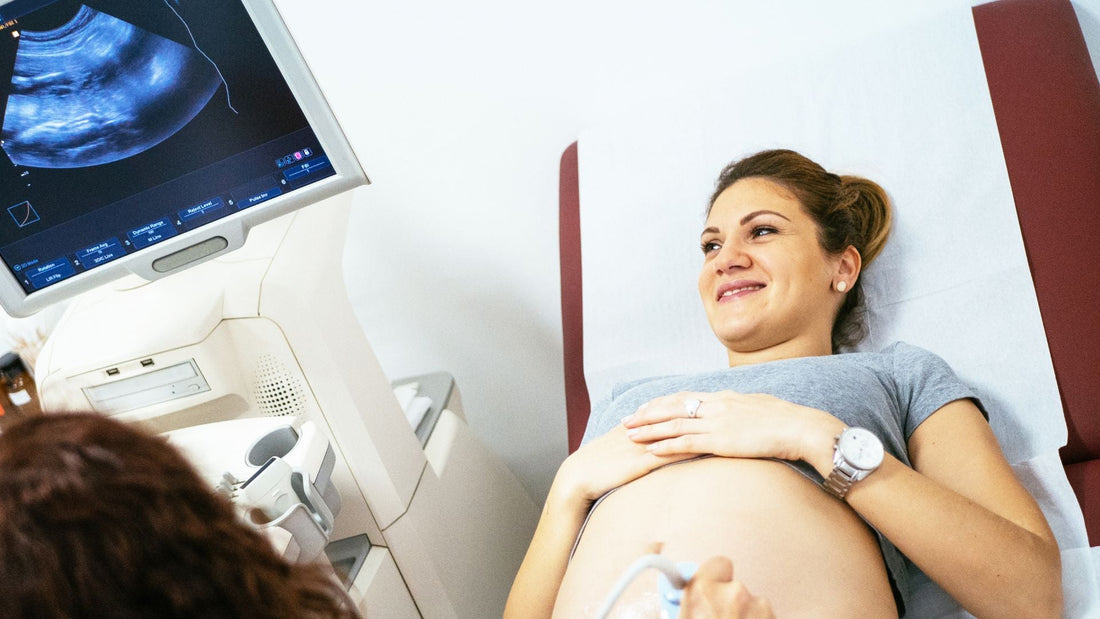Nuchal translucency, chorionic villus sampling and amniocentesis in pregnancy
Introduction
Nuchal translucency, chorionic villus sampling and amniocentesis during pregnancy : all pregnant women, but also those who are trying for a baby, have asked themselves questions about these tests.
If you have any questions about them - for example, what they consist of and when to do them - the article in the next lines is for you.
In fact, you will find a lot of useful information to help you experience the beginning of your pregnancy more peacefully (as well as a reference to a multidisciplinary prenatal video course that you can, if you want, follow from the comfort of your home).
As you can see, I have created an index. If you are interested in a specific angle of the topic, all you have to do is click on the corresponding paragraph title and delve deeper.
In case, after reading, you still have doubts, you can come and visit me on Instagram and ask me all the questions you want in direct or in the comments.
Now, as I like to say in my videos, it's time to get into the action!
Nuchal Translucency: What It Is and When It Should Be Done
As recalled in this video by Doctor Maria Chiara Alvisi, an independent midwife and author and curator of the prenatal video course that you can find at the end of this paragraph, nuchal translucency is a test that is performed at the beginning of pregnancy .
Unlike chorionic villus sampling and amniocentesis, which we will discuss in more detail in the next paragraphs, it is not a diagnostic test but a screening test .
What does it mean? That, once the procedure is over, the future mother does not find herself with a certain result in her hands.
What you are provided with, in fact, is a parameter that includes you in a specific risk category.
The latter can be low or very high and concern the probability of giving birth to a newborn with certain pathologies.
At this point, you are no doubt wondering when to perform translucency .
The ideal time is between the eleventh and thirteenth day of pregnancy.
This non-invasive ultrasound examination is based on the observation of some parameters - the nasal bone, the heart valves, the facial mass and the venous ducts - and on the comparison of these data with those of a blood test.
Nuchal translucency allows the mother to be included in a specific risk class with regards to the possibility of giving birth to a child affected by trisomy 21 - Down syndrome - trisomy 18 and trisomy 13.

Chorionic villus sampling during pregnancy: indications, peculiarities, execution times
After talking about nuchal translucency , the time has come to focus on everything related to chorionic villus sampling during pregnancy.
As specified in the previous lines, in this case we are talking about a diagnostic test.
The future mother will therefore find herself with a certain result in hand and not with references to a specific risk class.
Another important difference from nuchal translucency is that it is an invasive test.
In fact, chorionic villus sampling carries a risk of miscarriage, albeit a low one.
The test involves taking a portion of the chorionic villi, i.e. the extensions of the placenta whose formation starts from the fertilized egg.
Withdrawal can be made in two ways:
transcervically, that is, passing through the cervix;
Transabdominally.
Able to provide valuable information on the health of the puppy as they are characterised by the same genetic makeup , the chorionic villi, after collection, are analysed in the laboratory.
By doing this, it is possible to make a clear diagnosis of pathologies such as Patau syndrome , Down syndrome and Edwards syndrome.
Chorionic villus sampling during pregnancy also allows for the diagnosis, when present, of genetic diseases such as thalassemia and cystic fibrosis.
The test is performed between the tenth and thirteenth week of gestation. It is not recommended for all mothers.
First of all, I would like to point out that, just like nuchal translucency, it is not mandatory.
It is up to the individual couple to decide whether to proceed or not (also considering the aforementioned risk).
Regardless of this aspect, I would like to remind you that there are circumstances in which performing chorionic villus sampling is particularly recommended.
This category includes situations of couples who already have children with chromosomal pathologies.
Also worth mentioning is the case of future mothers over 35 who did not undergo the recommended screening tests during the first trimester.
It is recommended to perform chorionic villus sampling even in case of positive results following the execution of the above-mentioned screening tests, nuchal translucency first and foremost.


